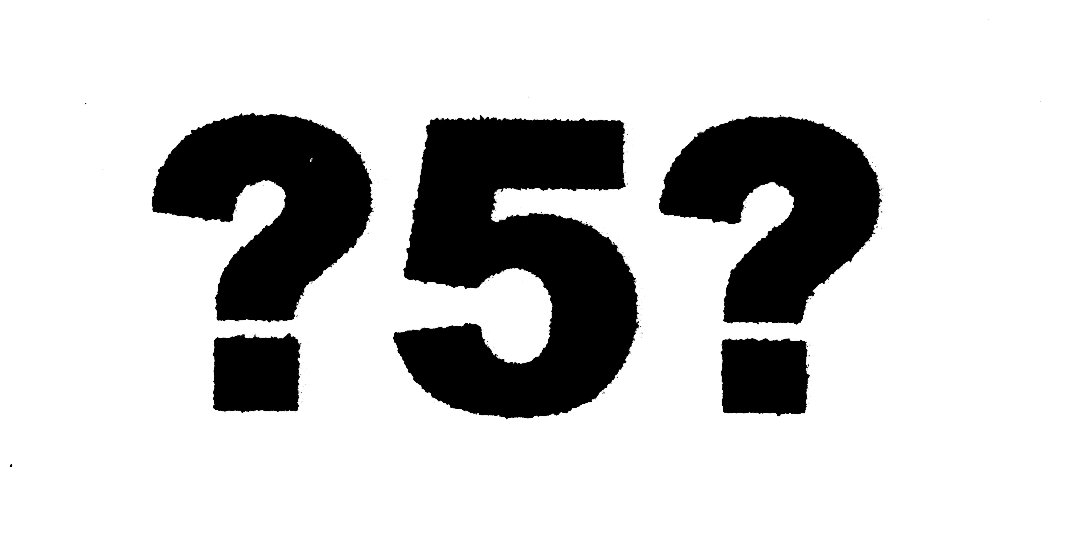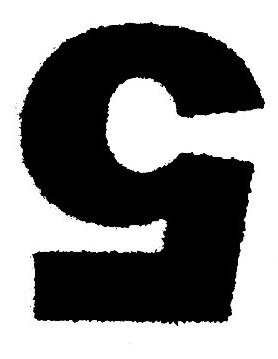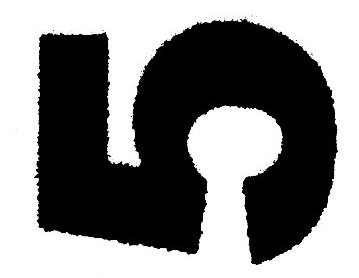
The Parahyba Provisional
A Tale of Two Opinions
I. Introduction
In 2004, a four part article authored by M, appeared in a well known German philatelic journal (of which he is the chief editor). In the meanwhile, it and it's English translation has been reprinted in numerous other journals. In the text itself (and sometimes in the graphics used), one can see that K (myself) supported M with numerous cover scans out of my private collection, which encompasses over 1000 covers of this flight with Brazilian franking (use was made of these), information from my research (some use) and my opinions on the theme (mainly ignored). With this commentary, I wish to distance myself from M's conclusions, which are not my own, and present my version of the possible truth behind the Parahyba provisional – to set the record straight.
Let me make one point very clear right from the start, I agree with M that the provisional is not a forgery, but that is also the extent of my agreement. You can't make a forgery of something that isn't kosher to begin with. My disagreement hinges on my firm conviction that this provisional was unneeded and utterly unnecessary. A list of factors that put the necessity in question will be presented and analyzed further on in this commentary, coupled with questions that were not really dealt with in M's article. These facts are based on objective factors (as far as possible), that are a result of my research.
Allow me now to be somewhat subjective. Reading M's article always proves to be very difficult and strenuous physically. The, in my opinion, at times very aggressive tone of the article (I'm always referring to the German original), especially toward the end, gives me a Bushian feel of “either you accept this as truth or you..., even, in some sense, religious, citing all the experts as if this were a college of philatelic cardinals who, together with a pope, are infallible. That I already have caused a very well known Zeppelin catalog to correct an error 75 years after this very flight being discussed here, because one expert S relied too much on Berezowski, who already got it wrong in his catalog of 1931, shows what experts agreeing really means. Real research and review articles should be more in the vein of a classical mode, a balanced, unemotional weighing of the arguments from both sides of the coin. This includes also putting everything in doubt if there are contradictions. And not just mentioning the experts that agree but also considering dissidents like A. Newall too. Too much, in our hobby, is taken for face value without really being verified. An error in one article, or made by a expert, although already disproved and rectified elsewhere, keeps getting copied like a Xerox machine. The scientific method must find its way into philately, the same methodology as used by historians. Historical research has a lot in common with forensics, the factors “opportunity, means and motive” in evaluating artifacts (covers and other literature) play a big role. Without a doubt, Mr. O in M's article had the opportunity and means to create the provisional, but what was the motive. I concur with M, that O wasn't moved by dishonesty motives or commercial gain when he created these provisionals.
But with my extensive experience in academia, government and industry, as well as an extensive insight into the Brazilian psyche, being married to a Brazilian and having lived among them (not in a foreigner ghetto as is often the case), I can easily see a completely different motive, that might possibly either not have occurred to M or was discarded by him.
II. Facts and Questions
For details as to some of the facts and factors eluded to in this section, refer to the article on stamps and first day of issue and further aspects on my website.
Fact 1: As I have demonstrated in the cited article before, the 5$000/20$000 was already in circulation and even the 5$000/1$300 was already printed and on its way to Curitiba. Mr. O probably, at that point in time - 1930, couldn't just pick up the phone and dial long distance to Recife and Rio, but radio-phones and telegraphs were available. At that time, Recife already had received the 5$000/20$000 and using them. Thus, if he was running low he could have advised one of the pilots on earlier return flights to get the message to Recife/Rio.
Fact 2: The 5$000/20$000 and even the 10$000/20$000 managed to arrive at and get used in such places as Bahia, Recife and São Paulo. Why not Parahyba? Also, why didn't larger ports such as Santos and much larger cities with big German populations like Porto Alegre manage to get along with supply of stamps initially sent without having had to resort to self-fabricated provisionals?
Fact 3: If O was planning to go to Recife for the banquet, why couldn't he just take the covers along and frank them there exactly as he did when he distributed the remainders to guests there?
Fact 4: All the cards canceled in Parahyba are either from himself (self-fulfilling prophecy?) or a banker/friend (see motives later on), the rest, in Recife, are cards by crew members and Zeppelin passengers. That he even had a remainders left to take to Recife leads one to wonder how big the demand throng and the stamp shortage really were.
Here resides another basic disagreement with M's conclusion. For my part and opinion, I do not need to prove that the provisional was unnecessary, the burden of proof for me is in the opposite direction. Especially considering that no other agency of Condor found it necessary to resort to such a measure, the actual need for the provisional must be presented. The testimony of the Postmaster is not, by itself sufficient; it's an alibi. Going to an analogy in a forensic case, even a plea of self-defense must be substantiated by further independent evidence. Note how Michel, after many years, threw out or put in the dubious category many of the German local issues of the 20th century for the same reasons.
Fact 5: M's remark, when discussing the card LF3, and noting that it didn't seem to get on the Zeppelin, “for some unknown reason”. Well maybe this initial card already alerted the people in Recife and maybe caused them in Recife to wonder what was with this blue 5 and was it kosher? That's a possible scenario, for which I have no proof at all but just as good as what M uses too. Fact is, in my stamps article on the site I even demonstrate that letters managed to be conveyed with absolutely NO zeppelin stamp on it (Citret). and the 13 provisionals together represented $7.80, at that time money, but not a fortune. So it became a “ta bom, deixa pra la”. But it doesn't mean necessarily that they didn't notice or were terribly happy about it.
III. Possible Motives
To look for possible motives for the creation of this, for my feeling, a”philatelic joke”, one must consider you have a man running a branch office of a shipping company, whose head office is in Bremen, Germany; and at the same time was an agent for Condor to sell stamps and passages for the Zeppelin. Times are difficult, the Depression is there, and he needs to keep the branch office up and running thorough all these difficulties.
Scenario 1- The Local Factor: Interestingly, of the four Parahyba canceled cards, three are created by O; for himself, a school friend in Saxony-Anhalt and a further friend in Bremerhaven. If there was a shortage of 5$000 stamps, he seems to have being creating it himself. The other card was sent by the manager of the Banco do Brazil (BoB) branch in the city. If you're a shipper and doing export/import, you always need a line of local credit to do business. With today's economic crisis, one sees first hand how critical this type of line of credit is for the daily business. In this part of Brazil, the Northeast, there was at the time and still is the factor of Coronelismo, the big shots of the town, the ones who ran the place and called the shots. (And best typified by the theater piece and TV-novela, by the renowned dramatist Dias Gomes, O Bem Amado.) Especially the head of the local branch of Brazil's biggest bank you would want to be friendly with and to. This is good business practice, networking, scratching each other's back, etc. And exactly this banker sends the card to Monte Carlo!
Scenario 2 – The Buddy Factor: The provisionals are so necessary that O even has, at least, 4 left over to distribute in Recife to selected persons. 2 of them go to crew members of the Zeppelin and the other is used on a card sent by Breithaupt. an influential Zeppeliner from WWI, who's along on the trip as a quest. One could call this ingratiating oneself to other people, the Zeppelin gang in this case, networking, lobbying and many other terms. The main point, though, is that if so many of so few were left over, how big was the need? In the case of Breithaupt (§), it could be even networking, since he had influence in certain corridors of power. Also, ministry people and one of the heads of Lufthansa were there too, and such an oddity as the provisional could have interested some there, giving O a chance to introduce himself and network even more; lobbying was then as it is still toady.
None of the two motives are dishonest or bad; the stamp being created as an ad hoc souvenir. But not necessary if all roads lead back to O, creating his own situation of scarcity.
IV. Conclusions
While not an outright fraud, in my humble and amateur philatelic opinion, formed since I started my collection of the 1930 Brazilian Zeppelin covers in 1976, is that this provisional is grossly unnecessary and deserves in manner what so ever, the status it enjoys. For me, the fact that O sent a card justifying their creation has no weight at all, and could, possibly, be a self-serving alibi for its creation. The Germans have a wonderful saying that applies to this case; when you hire a goat as your gardener.... To protect our hobby, we must have rigorous rules and standards, issues like this provisional need to have a higher bar of proof. And if there is any doubt, the issue should be listed in the catalogs with the corresponding cautionary note.
Another version of how this issue is seen, is the market place. For first class, generally recognized, rare stamps, ever higher auction results are being achieved. So high in most cases, that even factoring in inflation etc., the results actually show a growth tendency that rivals or exceeds other, normal market application tools. In the 1980's, these provisionals were going at circa 45,000 DM, yet, one sold in Switzerland in 2002 went for 25,000 Sfr. Do the math, with the inflation correction, and see how the price, corrected for the buying power, has dropped. The market has spoken. (Just as a note, when I started in 1976, I too dreamed of having one of these. Now I could get up to 2 of them - without going even close to broke, even with the stock market crash of late - before my wife might threaten to divorce me, but now that I know better and wouldn't even think of doing anything that economically foolish.)
Since the documents, that could cast a light on this issue, were in WWII all lost/destroyed, most of the available evidence is to a certain extent circumstantial. This leaves us with opinion versus opinion.
Let me close with a metaphorical example. No matter how many expert jewelers put diamond facets on a piece of broken glass out of the bottom of a green coke bottle, it's still not a green diamond.
(§) Note added: at this time and well into the era after the “Machtergreifung”, the WWI captain of the L15 was, in the rank of a lieutantcoronel, the “Referent” (type of chief advisor) for Airships (Luftschifffahrt) in the Reichsluftfahrtministerium. If he wasn't one that one wanted to keep happy and have his support inside the gouvernment, who then?









